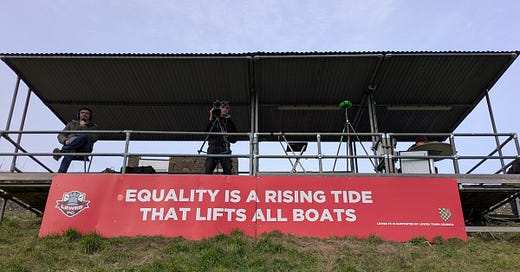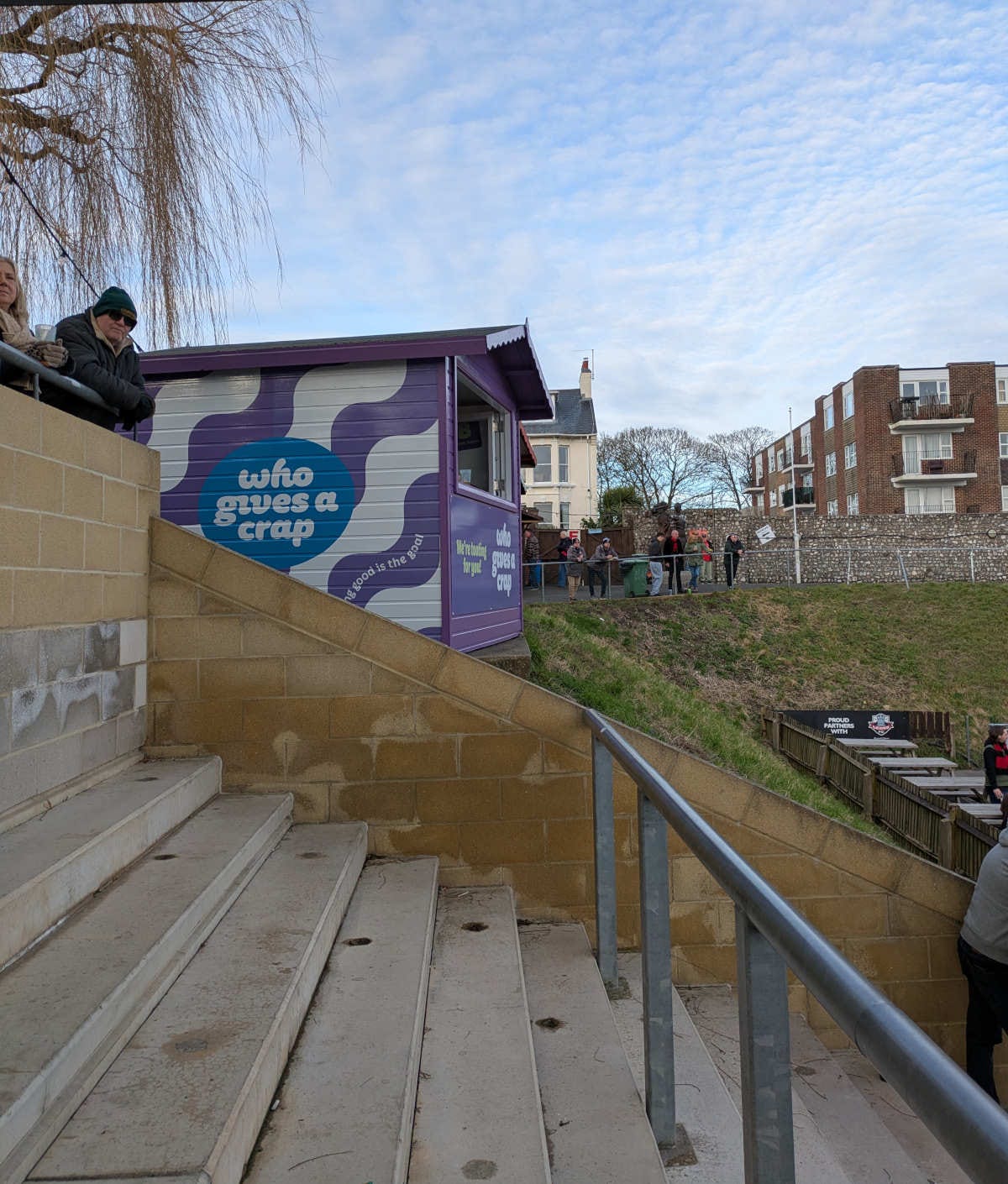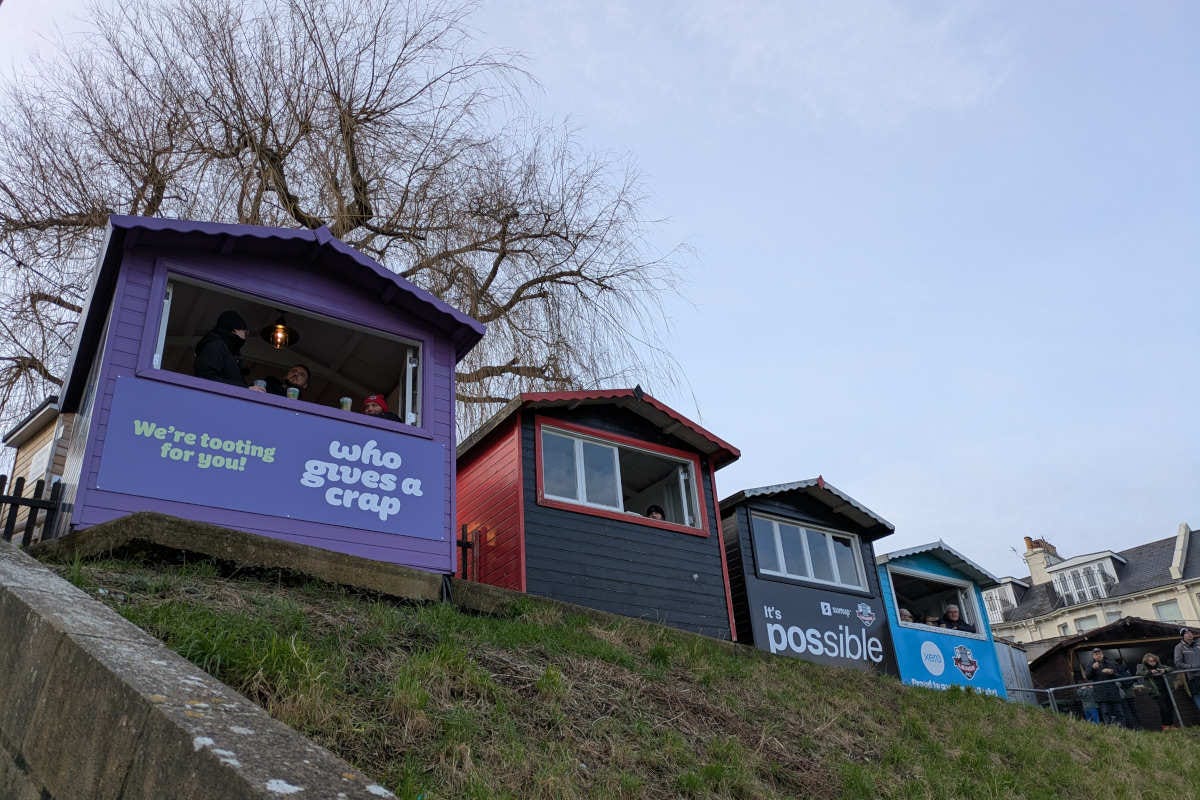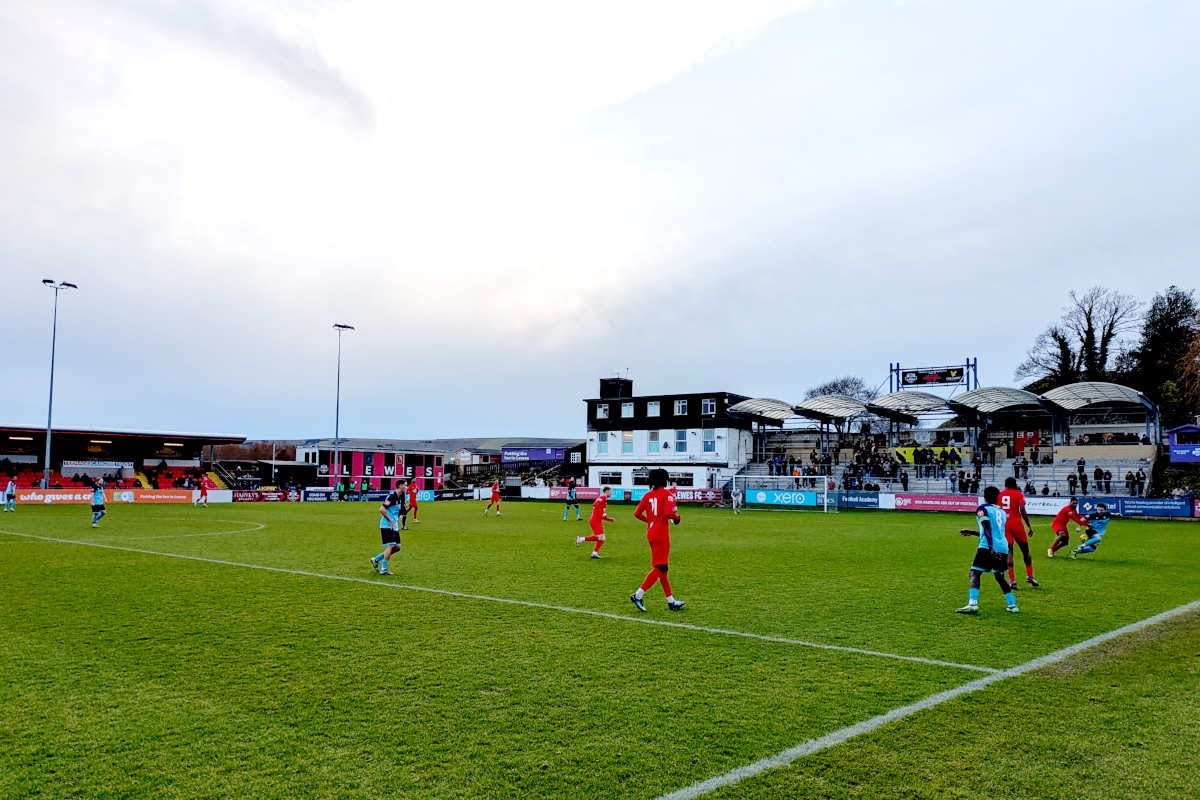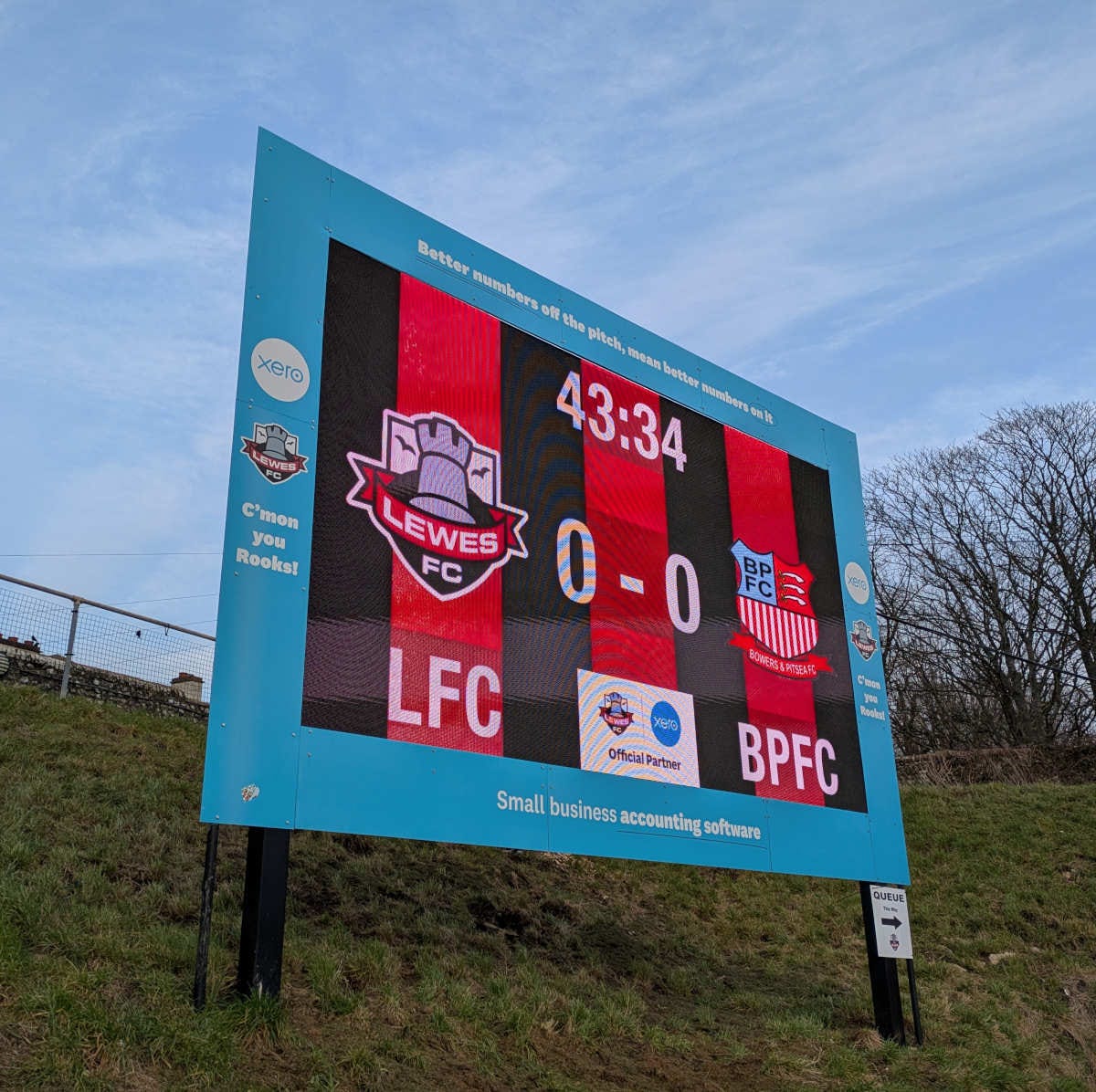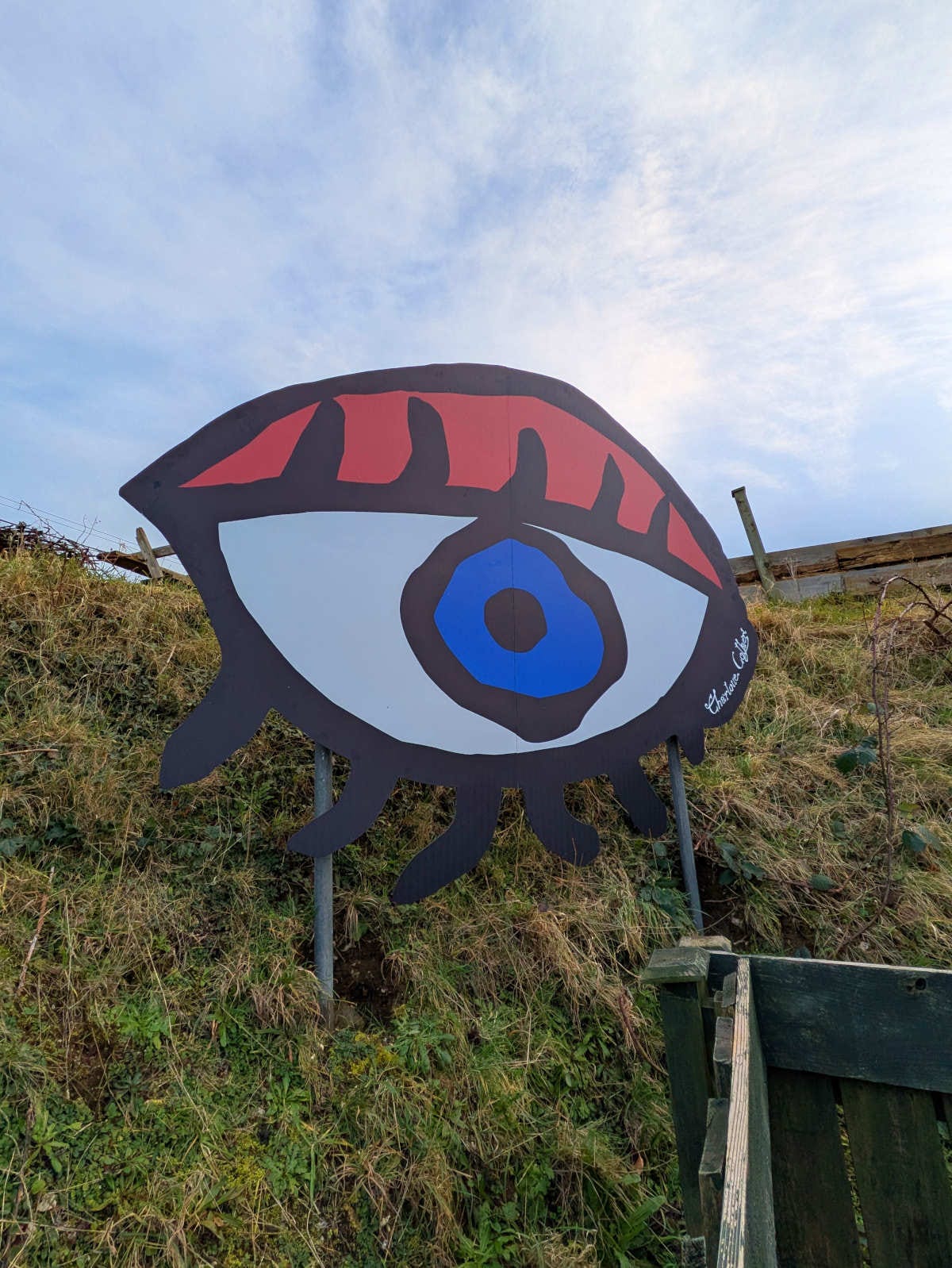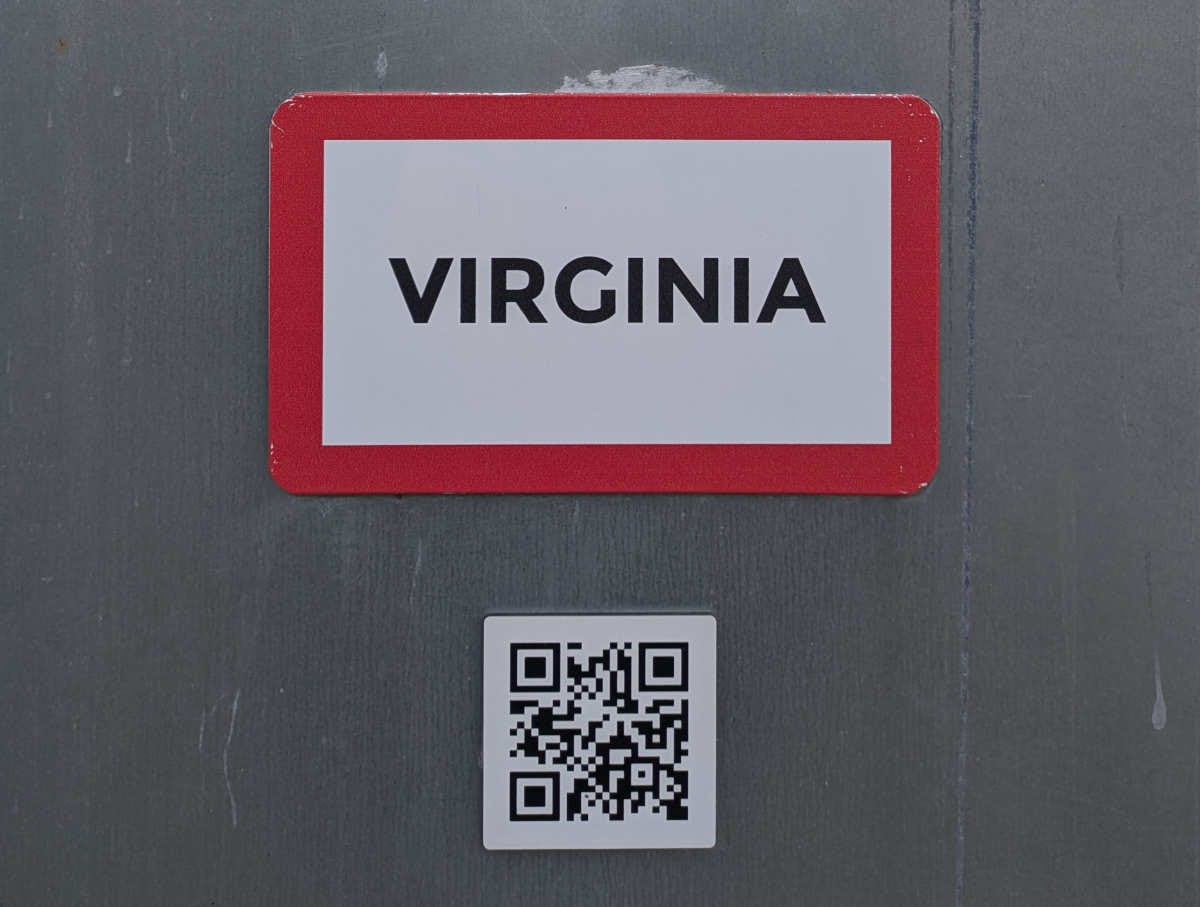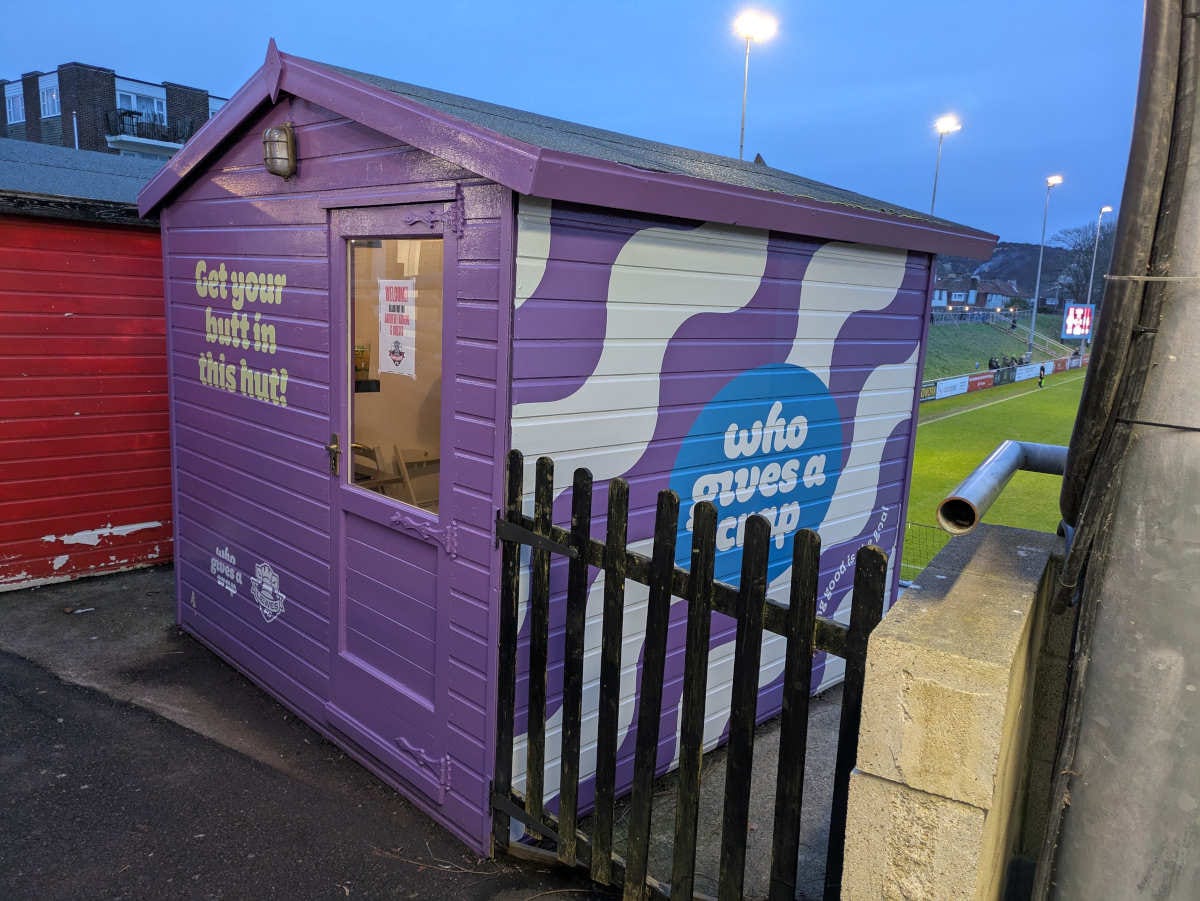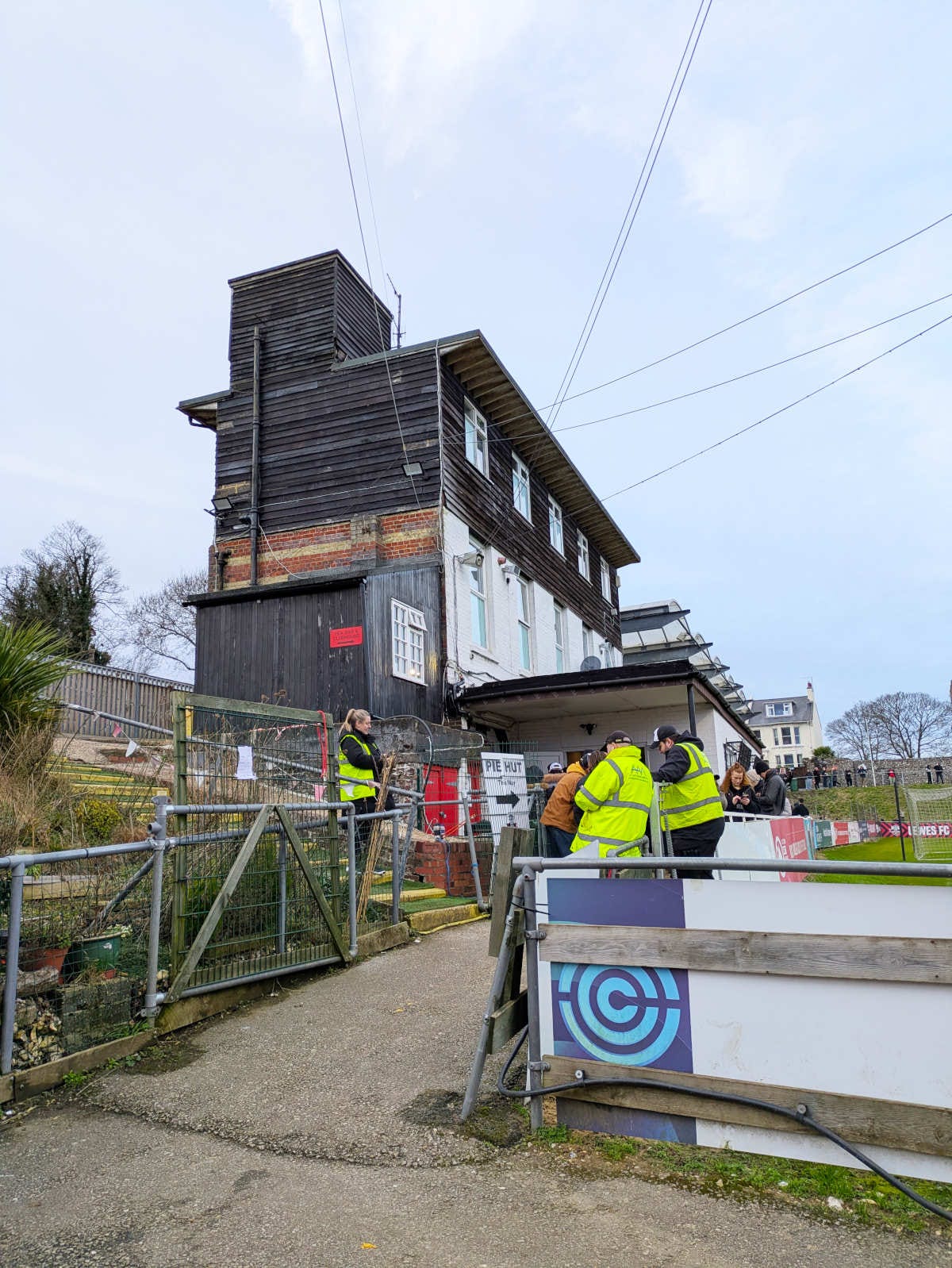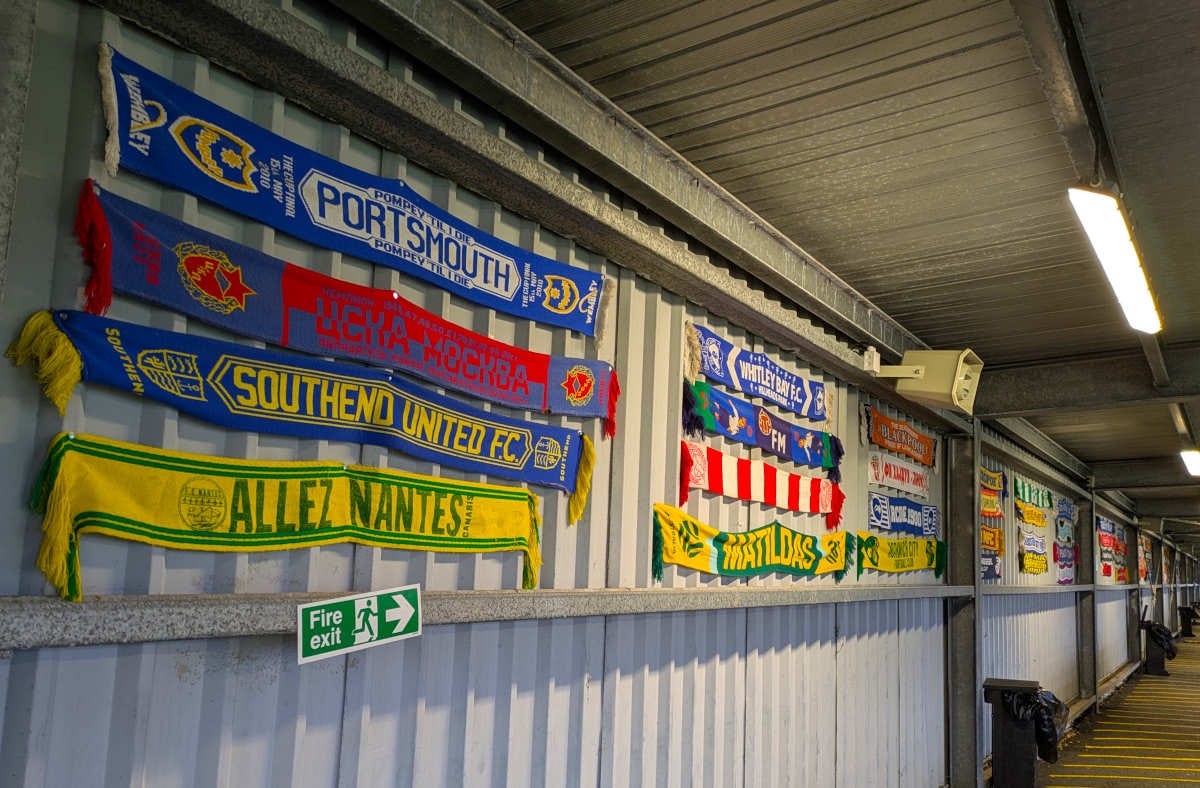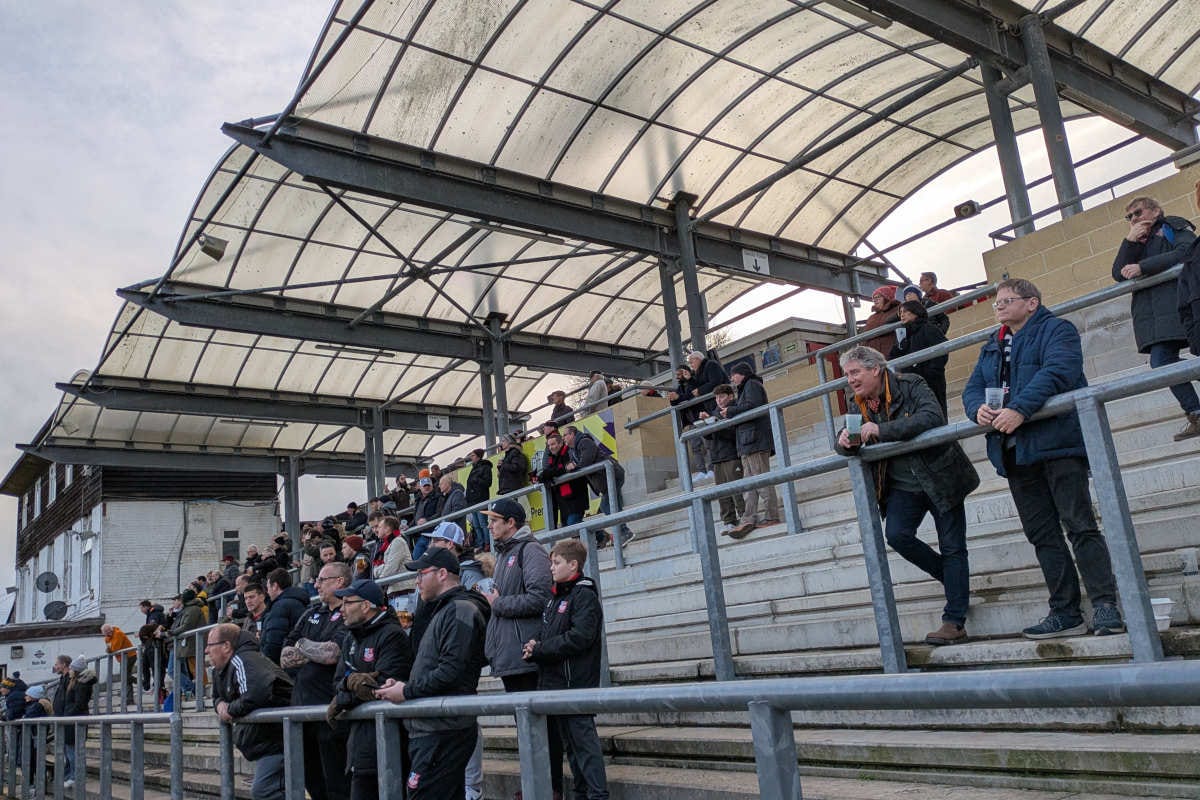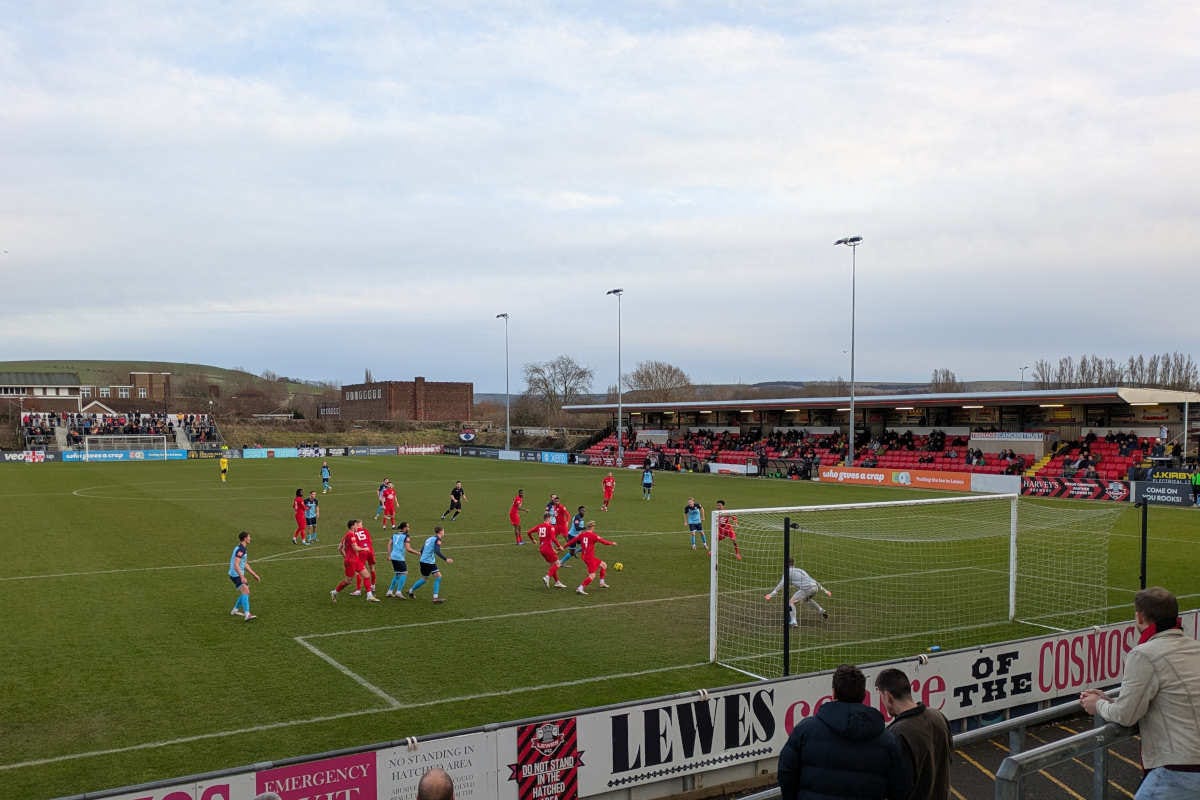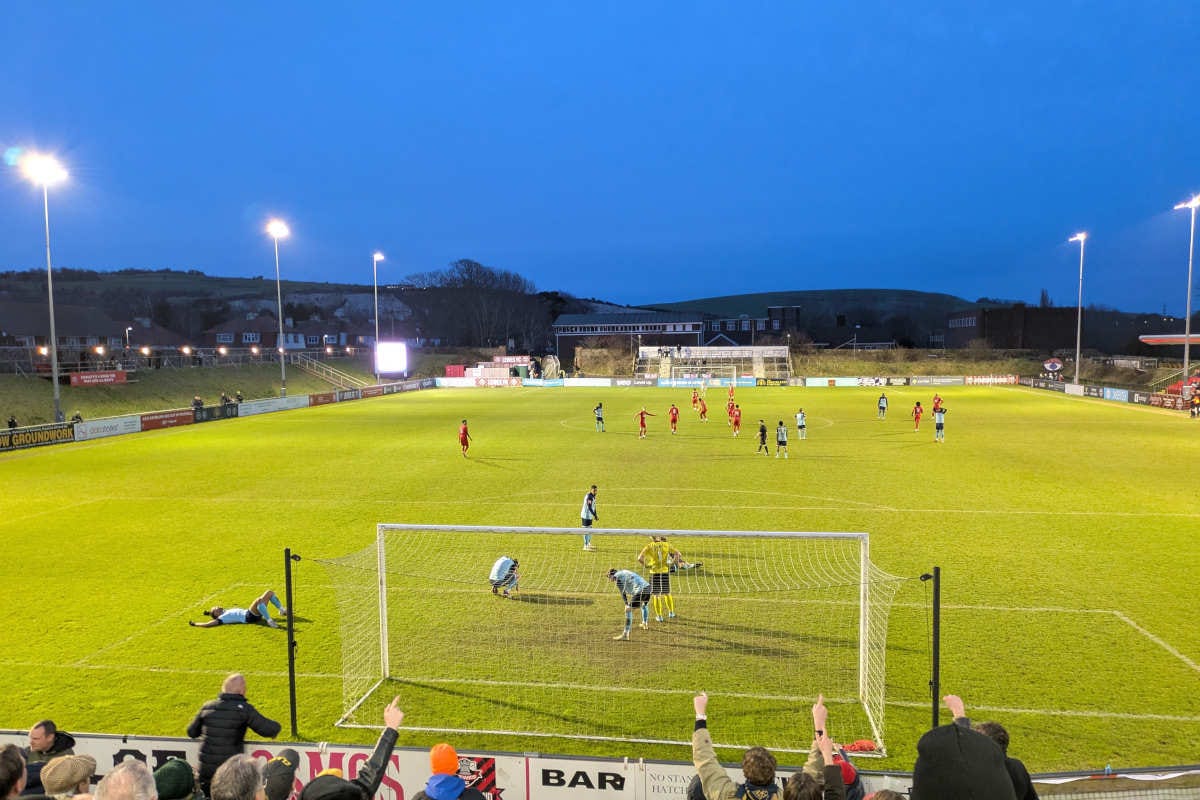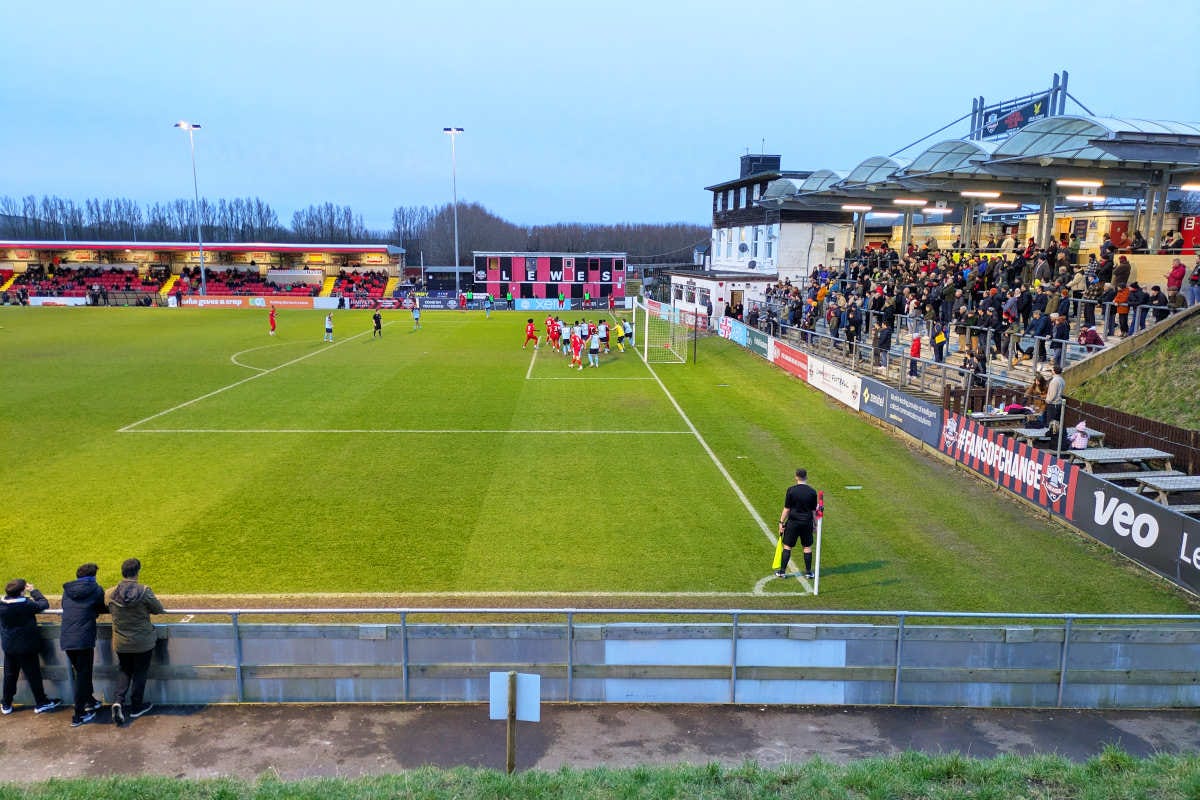Equality FC take their mission statement to its logical conclusion
For the tenth time this season, Lewes could only manage a draw. But this is a club with a broader mission statement that the form of its men's team.
Not the first time this season, it turns out that I have put too much thought into it. There was no need whatsoever to pull four matches out of a hat in the hope that one of them might land amid the driving rain and gale force winds. When I wake up on Saturday morning, the sun is shining and there’s little sign of any overnight rain. Panic averted.
That still leaves the thorny question of which of those four to choose. Bognor Regis Town is too far away. Shoreham is somewhere I was a little too familiar with. Whitehawk is an absolute devil of a walk, once you get to Brighton. Time, then, for another trip to Lewes. At least there’ll be a crowd there.
My girlfriend is a Basildon woman—although to be fair, she did leave at the earliest opportunity and hasn't returned that often—and when she asks who they’re playing, my answer is met with a puzzled, “What, Pitsea as in the market?”. “Yyyyyessss?”, I reply. See, I did know that Bowers & Pitsea were based in Essex, but no, I didn’t know that this particular place was a part of her childhood, still less on the edge of her hometown.
Pitsea market is 100 years old this year, famous locally as the place where you can buy just about anything. And as for the town itself, well, it’s part of the wider conurbation of Basildon, and with a population of 25,000 that makes it getting on for 50% bigger than Lewes. Last summer, the constituency that it is a part of returned a Reform UK Member of Parliament. This is no small part of the reason why neither of us have been in much of a hurry to get back there.
Bowers & Pitsea FC were formed in 1946 as Bowers United, three years before Basildon was designated as a new town. They were founder members of the Essex Olympian Football League in 1966, and joined the Essex Senior League eight years later, winning the league title three times in the days before promotion came with it. The club was renamed Bowers & Pitsea in 2004.
In 2015 they were runners-up in the Essex Senior League despite running up 92 points and scoring 125 goals from 38 matches because champions Haringey Borough only dropped eleven points all season. The following season Bowers & Pitsea did go one better at the end of a season-long tussle with Basildon United. They eventually ended on 96 points, two clear, and were promoted to the Isthmian League.
Life in Division One North of that league seemed to suit them, and after finishing 6th and 3rd in their first two seasons, they were champions at the third attempt in the last full season before the pandemic robbed us of two years. Things were a struggle in the couple of seasons back after football resumed. They finished 16th in their first season in the Premier Division and were relegated at the end of the 2022/23 season.
But last season brought a change in fortunes. They finished 4th in the table and won the play-offs thanks to two penalty shootouts, against Felixstowe & Walton United in the semi-finals and Aveley in the final. And this season has proved difficult for them. They arrive at Lewes one place off the bottom of the table. With almost two-thirds of the season now played, they’re ten points from safety. It’s looking like a return to Division One North at the end of the season, though nothing is guaranteed.
Had Lewes not made such an exceptional start to the season, they’d be in serious trouble now. When 1,759 people turned out for their August Bank Holiday derby win against Whitehawk, it was their fifth straight win from the start of the season. They’ve only won three of the 20 that they’ve played since then, and they haven’t beaten anybody since the 30th November, although it is worth mentioning that one of those wins was away to Bowers & Pitsea at the end of September. Indeed, two of those three wins since the end of August have come against a bottom two who’ve been stranded in those positions all season.
The crowd at The Dripping Pan this afternoon is 561, less than a third the number who turned out for that match in August. Part of the appeal of this particular match for us is the very small amount of walking it requires. It’s five minutes to East Worthing station and a train to Brighton. At Brighton station, things are busy. Albion are at home against Everton this afternoon, and Lewes is the stop after Falmer on the way out of town. With a combination of it being the last Saturday in January and with the Albion playing at home in the Premier League at the same time, perhaps this isn’t too surprising.
I was living within spitting distance of Brighton railway station at the time that the club moved into the Amex, and it’s not unreasonable to say that there were some teething issues with funnelling thousands of people four miles out of town at what are already busy times at a busy station a couple of times a week for ten months of the year. But this was more than a decade ago now, and nowadays things are all rather different. There’s a queuing system that actually gets us on a train and with a seat on time.
Having negotiated the maze-like Lewes railway station, it’s only a couple of hundred yards to The Dripping Pan and the teams are just coming out as we shove through the turnstile. There are few grounds in the south of England more idiosyncratic than this one. With its high grass bank running the length of one side of the pitch and small sections of terracing this has long been the case, but recent additions have further accentuated it.
There are beach huts in the corner which are available to use as executive boxes. The main stand is bedecked in scarves from other clubs. Behind one goal is a large, high covered terrace, though the positioning of the bar limits views of one corner of the pitch. Six of the eight floodlight pylons are named. The one that we looked at is called Virginia. Below her name on the side of the pylon is a QR code which sends you to a page on the club’s website which explains the naming. It turns out that Virginia the Floodlight is named for Virginia Woolf.
Many of the more recent additions to the ground are centred on the women’s team. The Lewes women’s team and the pushing of the club as “Equality FC” is all over the ground. There are art installations by female artists in two corners, a row of women’s only toilets at the top of the terrace behind one goal (as well as a unisex one), and a poster advertising a dedicated breastfeeding area. And no men died.
I am a white man, so football grounds have always been designed for me or people like me. But it should be obvious that they should be designed for, accesible to and safe for everybody. And the point of the whole venture—to the best of my knowledge, Lewes remain the only club in the world to pay their men’s team exactly the same as their women’s team—is the principle. When we went to the women’s North London Derby in November, my girlfriend commented that the atmosphere was very different and preferable to the testosterone-soaked world of Big Men’s Football. It’s different at Lewes, too.
The women’s team is holding its own this season in mid-table, after having been from the Championship at the end of last season, and interest from a venture capital group was rebuffed. That’s just as important to the wellbeing of this club as anything that happens on this particular Saturday afternoon.
And the men are benefitting from the profile of the women’s club. The Dripping Pan’s pitch could often turn a little boggy in the rain, and while that will fly in the Isthmian League Premier Division, it doesn’t in the Women’s Championship, so the pitch was replaced with a hard-wearing hybrid pitch in 2022. The upshot of all this is obvious. The pitch is in outstanding condition, especially for this time of the year and with two teams playing a full season on it. Money well spent. As the sign attached to the media gantry says, “Equality is a rising tide that lifts all boats”.
But by half-time, it’s all too clear where these two teams’ shortcomings are. Only five teams in the division have scored fewer goals than the 33 that Lewes have managed, and it will come as no surprise to find out that one of those is Bowers & Pitsea. The two teams go into this game having scored 58 league goals between them so far this season. League leaders Dover Athletic have scored 61 on their own.
They have a go at each other, but there’s little by way of goalscoring opportunities and it all looks a little scrappy. The best chance of the opening 45 minutes falls to Lewes, a shot blazed over from close-ish range, but there’s a noticeable lack of chance creation at either end of the pitch. By the time the whistle blows for the interval, if anything the game has the vague scent of a goalless draw.
Twelve minutes into the second half, that theory is blown out of the water when Pitsea score. It is, appropriately enough, a scrambled goal, a corner from the left rolled back to the edge of the penalty area, and a diagonal cross that’s back-heeled against the goalkeeper’s legs, only for the loose ball to be slammed into the open goal. The supporters behind the goal are delighted. Judging by their shouting and shrieking as the rest of The Dripping Pan falls silent, so are the players.
This finally seems to wake a soporific Lewes team up. Shooting towards the covered terrace next to the entrance, they pour forward, although chances remain thin on the ground. The arrival of Shae Hutchinson as substitute does breathe some life into them, and it looks as though he could bring them level when he’s put through and rounds the goalkeeper David Hughes, but the ball’s running away from him, he’s off balance, and he shoots over, by which time he’s right out on the left-hand side of the penalty area.
The introduction of another substitute almost makes a difference too. Calvin Ekpiteta is put through on the right, only to see Hughes—who was probably the player of the match—stretch out a leg and save it with his big toe. And then comes The One Moment. All supporters know this feeling, the point towards the end of a match when it feels as though a wasted opportunity is the final chance that a losing team can get back into a match.
And it comes a couple of minutes into stoppage-time when a deep corner from the right is headed back towards goal and hacked off the line, only for the clearance to be knocked back to Jack Meeres on the left-hand side, and his shot—which makes a sound like the gates of hell being slammed shut—is brilliantly flicked onto the crossbar by the goalkeeper, bouncing a few inches in front of the line, and away. It’s such a deft touch that the post-match highlights almost make it look as though he didn’t make it in the first place.
It feels for all the world like this must have been their final opportunity, but barely a minute later Lewes finally do salvage a point from the wreckage with a goal that is surprisingly composed for this late stage in the game. Danny Bassett knocks a Pitsea player off the ball on the left-hand side, but rather than continuing into a left-hand corner cul-de-sac, he switches inside, passes the ball across and it ends up with Marcus Sablier on the right.
Sablier could shoot, but instead he pulls the ball back across the penalty. In honesty it’s not the world’s greatest pass, but this seems to catch the away defence out. On the left-hand side of the penalty area is Bassett; the ball runs just behind him, but he takes a single touch to get the ball under control and smashes it into the goal, saving a point that the Lewes performance just about warranted.
The Pitsea players are strewn around their own penalty area with their heads in their hands. With a scent of blood in the air, the Lewes players are keen to get on with things, but with just over two minutes to play there isn’t really time for anything else. Honours end even, but it’ll feel much more like a win for one of these teams than it does for the other.
Bowers & Pitsea needed this win. They now only have fifteen games left of the season to try and rescue something from this season and they haven’t won since a 4-2 win at Hastings United—who are only one place above them in the table—on the Saturday before Christmas. This point has reduced the gap to safety to nine points, but they’re running out of opportunities. They may well end up back playing Basildon United next season.
Lewes need a couple of wins themselves. Not so much for any specific reason connected to their points tally—they’re now sixteen from the final play-off place, so that ain’t happening—but just to breathe a little life back into the players. With four going down this season, it’s difficult to see bottom of the table Bognor Regis Town or second from bottom Bowers & Pitsea staying up. With ten of the damn things, Lewes have drawn more league games than they’ve won this season, and that is a… problem.
They’ve only won three league games since the end of August, and while the 34 points they’ve already accrued is okay, it wouldn’t have been enough to keep them up over the last two seasons—they’d have needed 34 last season, but 40 the season before that; this isn’t the Premier League, you know—and it might not be this time around. Bowers & Pitsea, of course, will already be familiar with this. Two years ago it was them, occupying that final relegation place.
The mood on the train back into town turns gloomy after it departs Falmer. Brighton have just lost 1-0 at home to Everton and David Moyes’ magic hat, and the mood is grumbly. But we do get to share a proportion of the journey with a woman who has with her a most excellent poodle, so it doesn’t feel like a waste. Brighton railway station is hustling and bustling. There’s no rush to get home, so we stop off for drinks in the pub that I used to call my ‘local’ when I lived over here. It might be again, later this year.


